Will mega dams turn Bhutan's happiness sour?
Famed for its pursuit of happiness, Bhutan’s investment in a new wave of hydropower projects suggests all may not be as it seems in the Buddhist kingdom
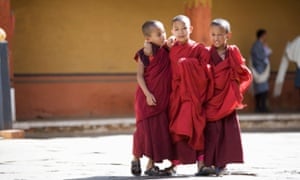
Beth Walker reporting from Bhutan
The tiny kingdom of Bhutan, wedged high in the Himalayas between China and India, has become famous for its pursuit of gross national happiness(GNH) – conserving nature and cultural values over and above economic growth.
Bhutan is also praised as a global leader in environmental protection: 72% of the country is under forest cover and more than half is a protected area. The country has declared it will be the world’s first 100% organic nation and carbon neutral for all time to come.
Yet, less than 20km downstream from the sacred Buddhist fortress at Punakha, Bhutan’s winter capital, we are forced to a halt by the intensity of thick clouds from construction dust, machinery and buses shuttling workers home at the end of a long day. The roadsides are littered with shantytown settlements housing the thousands of migrants who’ve come to work at the site of one of Bhutan’s mega dams, Puna I.
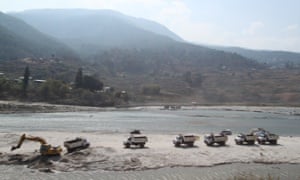
All hail hydropower
Bhutan’s plans to exploit the vast potential of its high peaks and running rivers promise to transform it from an isolated backwater into one of the world’s fastest growing economies.
It aims to install 10,000 MW of hydropower by 2020, 80% of which will be sold to India. So far it has exploited only 5% of its potential, but the long-term planenvisages 74 dams in cascades across the country.
For Bhutan’s political leaders – the remote Himalayan state turned from an absolute to a constitutional monarchy in 2008 – hydropower is a saviour, providing a perfect vehicle “to balance material and spiritual needs”, says Lyonpo Norbu Wangchuk, minister of hydropower and economic affairs. It offsets dirty fuel across the border in India, and provides about 25% of Bhutan’s GDP and almost half of government revenue (expected to soar to 75% in the future).
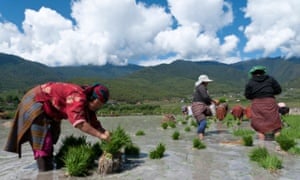
But there are increasing misgivings about the massive expansion plans, in part because they are so dependent on India, which provides most of the financing, receives most of the electricity and whose companies have most of the construction contracts.
Economic growth has stuttered in Bhutan because of rising debt and a debilitating trade imbalance with India, which supplies almost all Bhutan’s needs, from petrol to construction materials, grains to meat. In addition, while Bhutan exports power to India in summer, it must import electricity at a higher price during the winter when river flow is low.
Trouble on the horizon
Financial problems will only increase as India replaces grants with commercial loans and inter-governmental projects shift to joint ventures.
Prime minister Tshering Tobgay recently expressed interest in opening up the hydropower sector to other foreign direct investment. The ultimate aim is to sell power to Nepal and Bangladesh through regional power grids, but existing agreements with India give the country little room to manoeuvre.
Most of the jobs created by hydropower are in construction – unattractive to young Bhutanese, products of the country’s good education system, and youth unemployment rates remain high.
A host of environmental problems have also emerged. Dam builders have tried to minimise damage by constructing “run of the river” dams, channelling water through tunnels and turbines rather than collecting it in large reservoirs. However, the blasting and tunnelling for the Punatsangchhu projects – the two largest dams under construction – have caused widespread environmental disruption to forests and river systems, and destroyed the habitats of the endangered white bellied heron and golden mahseer, a rare species of Himalayan carp.
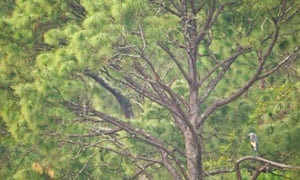
Other projects in the pipeline, such as the Sunkosh dam, will involve large reservoirs, which may flood agricultural land and important religious sites.
Landslides and a sinking river banks have significantly delayed the Puna I project and the dumping of muck into rivers has clogged channels, ruined paddy land and dried up underground springs. Many of the Indian companies designing and building the dams have poor track records.
Vulnerable region
Climate change adds another layer of complexity. Bhutan has lost 20% of its glaciers in the last 20 years and river flow is predicted to fall significantly over coming decades, leaving dams inoperable. In the short term, melting glaciers pose major flood risks, which could lead to catastrophic failures of dams and hydropower projects.
Even more alarming, Bhutan sits on the fault line responsible for the earthquake that devastated Nepal last month, and scientists warn that further large earthquakes could hit the region in coming decades.
Tremors felt in Thimphu roused anxiety: “We’re not prepared,” Chhador Wangdi, director of the disaster management department, told the Bhutanese media in the aftermath of the quake. The country has not mapped earthquake prone areas or drawn up emergency response plans, he admitted.
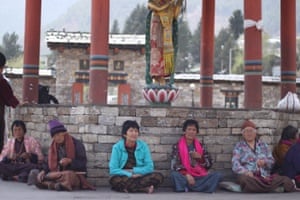
While the government rushes forward with plans to ease the increasing economic malaise and satisfy the growing consumer class, many in the region fear the lack of systematic planning.
“Currently when you look at maps for this region it’s pretty much a shotgun approach,” says Sami Tornikoskhi, leader of WWF’s Living Himalayas Initiativebased in Thimphu. There are no cumulative impact assessments to identify the best and riskiest places to build hydropower and they’re not looking at the trade-offs between key sectors of the economy – agriculture and tourism for example, he says.
New challenges of democracy
Uygen Wangchuk, secretary of the National Environment Commission and in charge of granting environmental clearances for new projects, admits there are increasing pressures both within and outside the government to push through hydropower, mining and quarrying. “Our ecosystem is very fragile, very mountainous and mitigation costs are far higher than other countries. How to prevent the impact of degradation, floods and erosion is really a big challenge for us. But I’m a tough man,” he says, slapping his betel stained lips.
Wangchuk would like to persuade the government to keep a stretch of one river free flowing and is working with WWF to develop a proposal. He hopes a declaration will be made to mark the fourth king’s birthday later this year.
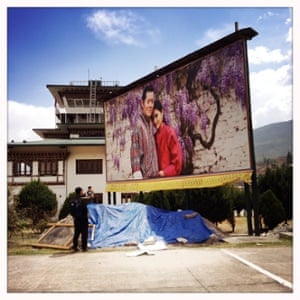
It was Bhutan’s fourth king, Jigme Singye Wangchuck, who first espoused the vision of gross national happiness. However, the reality on the ground in a modernising and developing country with hydropower is different.
Advertisement
“What we have accumulated and come to be articulated as GNH can be lost with the wrong policy and this could be irreversible,” the hydropower minister says.
My questions about GNH are generally met with giggles or a roll of the eyes. “This is something our leaders talk about,” one journalist confided. “It doesn’t mean anything to us.”
Bhutan’s conservative Buddhist society has no tradition of open criticism, and NGOs have yet to put the state’s political leaders under pressure. However, Rinchen Wangmo, programme manager at Bhutan’s first environmental NGO, Royal Society for Protection of Nature, sees an opportunity to do things differently.
“Environment conservation doesn’t feature as a priority in party manifestos,” she says. “This is a wake-up call for NGOS to move away from our comfort zone, strengthen our advocacy and bring about change.”
The water hub is funded by Grundfos. All content is editorially independent except for pieces labelled “brought to you by”. Find out more here.
This content is brought to you by Guardian Professional. Become a GSB memberto get more stories like this direct to your inbox.

No comments:
Post a Comment